(Previous: Wishing for Perfect Eyesight: Thick Glasses & Contacts Since Age 9 )
In April 2013, a few months before my “answer to life, the universe and everything” birthday, my mom had seen a daytime talk show with a young woman in the double-digit diopter range who had implantable contact lens (ICL) surgery and was overjoyed with her results. I had never heard of this surgery, so I looked it up, found it is more formally called phakic intraocular lens (IOL) surgery with a plastic lens with built-in UV protection surgically inserted behind your iris in front of your natural lens, that I was in the low range of the possible correction amount, plus if you ended up with halos or something you didn’t like, YOU COULD TAKE THEM OUT AGAIN. Of course it required a second surgery to remove them, but that was major to me! LASIK being a permanent change had always scared me, so this was a huge deal for my comfort level of being willing to try. My annual eye exam was that same trip, and I was finally 6 years with no change in prescription and in my early 40s, so hopefully stable for good until reading glasses, and I was still testing a few years away from needing those. I was so excited there might be a chance for my wish to finally come true!
Next was the trick of finding who could do this surgery for me. Since it was higher risk than surface laser correction and a newer surgery, I wanted someone with plenty of experience in intraocular lens (IOL) surgery, not just lasers. I was hoping to get a personal recommendation somehow, but all my LASIK friends had their surgeries so long ago, and were just referred by their optometrists, so I didn’t get very far. I did receive a local Better Business Bureau approved guide in the mail that listed a doctor who did almost every eye surgery under the sun and was listed as “the doctor’s doctor” but I was still stuck since I wasn’t sure if that was just advertising propaganda. I was also super busy with my summer parties and Halloween plans already. Finally in August 2013 I had dinner with an old friend I hadn’t seen in a while, the conversation migrated to my possible eye surgery and his LASIK years ago, and he mentioned “Don’t bother going to anyone but Dr. Mark Mandel. He’s the best in all of Northern California. All the other medical doctors, eye surgeons and their families go to him.” Lo and behold, that was the same listing I had found, so I considered that fate, and called for my free consultation appointment the next day!
Of course they’re a busy office, so the next evaluation appointment available was a few weeks later. I had lots of tests that afternoon for cornea thickness, pupil size as well as vision, then Dr. Mandel said I was a good candidate for IOL implants, but the best technique was to expect touch-up LASIK after the implants settled, especially since I’d been wearing rigid contacts for so long, we would need to watch what my corneas would do once they were “free” to move. Since I was so afraid of halos, he recommended using only -10 diopter implants since those were the largest refractive area, so theoretically less chance of halos being generated by my pupils dilating wider than the refractive area. He was hopeful that I would only need driving glasses after the implant surgery, then we would need to wait about 3 months to see what my “free” corneas would do before doing low-correction LASIK to get me to full correction. Due to my Halloween schedule and my mom’s busy life in “retirement,” we scheduled my implant surgery for November, the week before Thanksgiving, and my iridectomy by laser 3 weeks before then.
The laser iridectomy was the most jarring experience and the most painful recovery for me! No contacts that day of course, they give you numbing drops, stick a goopy giant lens over your eye that helps keep you from blinking, you lean in to rest your chin, then the laser pokes several holes in your iris so pressure can regulate after the implants are placed blocking where your pupil hole usually allows free flow of fluid between chambers inside your eye. This laser is LOUD, like someone is smacking something against the table for each zap, and it didn’t hurt but it was like quick rubber band snaps. Repeat for the other eye, then you’re done, longer in the waiting room than the actual procedure. They had said I could drive myself home, but the smeary goop stayed in my eyes for a bit before it flushed away. I had a long freeway drive home during rush hour in my glasses that were never great for night-driving, and I had a giant headache by the time I got home so I went to sleep early. My eyes were aching for a few days so much that I was really tired, but the anti-inflammatory steroid eyedrops started helping over time.
One reason Dr. Mandel is so highly-regarded is that his procedure is very conservative and designed for the least risk possible, even though it may not be convenient. You must agree to using over-the-counter lid scrubs, really expensive antibiotic drops, and antibiotic ointment on a dictated schedule before IOL surgery, and no contact lenses or eye makeup 3 days before the surgery. Other doctors might perform implants on both eyes at the same time, but Dr. Mandel refuses to do so. Since they are actually cutting into your eye to place the implants, they only do one eye at a time, non-dominant eye first, just in case of any complications. I definitely appreciate the conservative procedure, but be sure you plan what you will do for the time between when you cannot wear a contact lens in the eye that is still waiting for surgery and your glasses won’t work anymore for your surgery eye! I brought my glasses that had an easy screw to remove the lens, so I wore my glasses with only one lens between my implant surgeries. 
The implant surgery itself was very interesting. Valium to relax, dilation drops and numbing drops on a schedule, shoe covers & hair cover plus a surgical gown over your street clothes, they used a marker on my forehead above my surgery eye, then walked me back to the surgery table. They placed a large sheet of sticky plastic over my entire face, cut a slit for my surgery eye, then grabbed all my eyelashes with the sticky plastic to keep them out of the way. No physical restraint to keep from blinking but the sticky plastic would have prevented that anyway. Since I couldn’t blink they put drops in my eye every so often to keep them moist. No pain at all, but I could feel pressure as the tiny incisions were made in my cornea, and I could feel and see Dr. Mandel inserting the implant and scooting it around inside my eye, rotating to get it into the correct place. There was a bright overhead light that was a lot of glare to my dilated eyes, but as he was moving the implant around I could see glimpses of clearer background every so often, but then it would move again back to blurry, back and forth. When it was over, I could see much better than before, but still not perfect, as we expected…but I could see my mom’s face from my post-op chair, and that would have been impossible before!
They want to be sure everything is settling properly and there are no pressure problems before you go home, so we walked to lunch then came back two hours later as they requested. I was fine, so we went home until the day-after checkup the following day. They didn’t give me any restricting drops after my left eye surgery, and at the next day checkup they commented how dilated I still was!
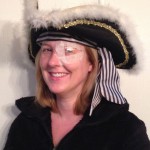 The post-op care is different than LASIK. You don’t need to keep your eye closed constantly, but you should rest as much as you can, and you need to be very careful the first few days about bending over or lifting things since you don’t want to aggravate any eye pressure as everything settles. They recommend artificial tears if you feel dry, but I never felt dry enough to bother with those, only a tiny bit scratchy the first day from the small cornea incisions. They give you a specific schedule for the antibiotic drops and the anti-inflammatory drops, and they differ, phasing the antibiotics out over a week, but the others phase out over a month. I wrote them all out on my daily to-do lists so I wouldn’t forget which drops to take when. For my first morning after wearing my first patch, I put on my pirate hat for fun. 😉 I only had to wear the plastic patches when sleeping at night, so I was able to watch TV with my mom, and she did the heavy lifting and bending over as we decorated my house for Christmas.
The post-op care is different than LASIK. You don’t need to keep your eye closed constantly, but you should rest as much as you can, and you need to be very careful the first few days about bending over or lifting things since you don’t want to aggravate any eye pressure as everything settles. They recommend artificial tears if you feel dry, but I never felt dry enough to bother with those, only a tiny bit scratchy the first day from the small cornea incisions. They give you a specific schedule for the antibiotic drops and the anti-inflammatory drops, and they differ, phasing the antibiotics out over a week, but the others phase out over a month. I wrote them all out on my daily to-do lists so I wouldn’t forget which drops to take when. For my first morning after wearing my first patch, I put on my pirate hat for fun. 😉 I only had to wear the plastic patches when sleeping at night, so I was able to watch TV with my mom, and she did the heavy lifting and bending over as we decorated my house for Christmas.
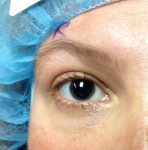 Dr. Mandel has four offices spread over the Bay Area, and these surgeries are only Mondays and Thursdays when he is in Hayward, so I had all of Tuesday and Wednesday of weird one-eye glasses and wearing one patch at night before my right eye surgery on Thursday. For my left eye, I didn’t wait as long after all my dilation and numbing drops, but for my right eye, they took long enough that I thought it wise to visit the restroom before surgery. I laughed when I saw in the mirror how giant my pupil was so I took a selfie while I was waiting. 😉 The only thing different inside the surgery room was that they gave me oxygen via nose tubing, so I’m not sure why that was different than my left eye. They also gave me restricting drops after surgery this time, so by the time we went to lunch before the initial checkup, I could actually read signs on the opposite wall of the restaurant!
Dr. Mandel has four offices spread over the Bay Area, and these surgeries are only Mondays and Thursdays when he is in Hayward, so I had all of Tuesday and Wednesday of weird one-eye glasses and wearing one patch at night before my right eye surgery on Thursday. For my left eye, I didn’t wait as long after all my dilation and numbing drops, but for my right eye, they took long enough that I thought it wise to visit the restroom before surgery. I laughed when I saw in the mirror how giant my pupil was so I took a selfie while I was waiting. 😉 The only thing different inside the surgery room was that they gave me oxygen via nose tubing, so I’m not sure why that was different than my left eye. They also gave me restricting drops after surgery this time, so by the time we went to lunch before the initial checkup, I could actually read signs on the opposite wall of the restaurant!
Unfortunately by the time we were driving home in the evening, I could already not read the street signs and was seeing starburst halos around lights, so I was sorely disappointed that I would have to be wearing glasses for Thanksgiving, Christmas and New Years, and for several months until I could finally have LASIK touch-up surgery. I did not expect at all that immediately post-implant surgery I could see much better than just a few hours later. For the emotional impact, I wish there was some way they could prevent that, since it is a horrible tease! I understand that this is because of the settling process, and the restricting drops they give you to undilate your eyes make it like you are getting better correction from squinting, but that is very frustrating to have clearer vision then lose it so quickly!
Thursday night and Friday I could see better than without glasses before my surgeries, but I had nothing to help me see clearly but squinting, so I was frustrated after being spoiled by 100% correction by glasses or contacts for so many years. I could see my bedside clock better but not across the room, and I held my iPhone and iPad up to my face to read them, but at least not all the 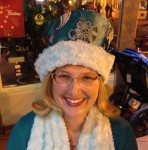 way at my nose like before. Leaning in to read my laptop was too annoying to bother. At my next day checkup on Friday, they gave me my new prescription and we ran to LensCrafters to pick out new frames (mine had broken the week before so were taped together for the one-eye glasses all week) and get my first ever one-hour lenses. I’d always had to wait a couple weeks for special high-index, anti-glare-coated, beveled-edge expensive glasses before. I still wasn’t allowed to wear makeup yet, so I wore a new hat I made along with my new glasses at dinner with my mom and my friends that evening.
way at my nose like before. Leaning in to read my laptop was too annoying to bother. At my next day checkup on Friday, they gave me my new prescription and we ran to LensCrafters to pick out new frames (mine had broken the week before so were taped together for the one-eye glasses all week) and get my first ever one-hour lenses. I’d always had to wait a couple weeks for special high-index, anti-glare-coated, beveled-edge expensive glasses before. I still wasn’t allowed to wear makeup yet, so I wore a new hat I made along with my new glasses at dinner with my mom and my friends that evening.
Interestingly even though my eyes were almost exactly even prescriptions before surgery, my post-implant vision needed correction of -2.25 diopters for my right eye and -3.25 diopters for my left. That was a much bigger difference than before, so much that I had trouble reading without my glasses since they wouldn’t focus together. Knowing that the same -10 diopter implant was placed in both eyes, this means my left cornea caused more of my overall myopia than my right cornea. Severe myopia is most likely a combination of elongated eyeball shape creating longer retina distance from the lens, squat lens shape and pointed cornea both focusing before reaching the retina, and the IOL placement is behind the cornea, only correcting the lens and retina distance. I’m not sure they can really test in advance how much of your correction is because of cornea shape vs. the rest of the eye, so this is why the LASIK fine-tuning is usually needed. From my experience, I wouldn’t recommend anyone to count on implants to correct completely, so expect you’ll need LASIK to get you all the way.
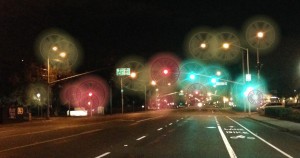 Remember how halos were my fear and we were trying to prevent them? Unfortunately with my left eye I saw wide starburst halos with fine radial spokes around all the streetlights when driving at night, and as long as I stared at oncoming headlights, the halos would shrink, but if I didn’t have a bright enough light source to focus on, I had a billion overlapping starbursts in traffic, especially scary driving on the freeway in the rain when the raindrops multiplied the points of light even more. Red taillights weren’t bright enough to focus the halos away unless I was stopped in traffic behind them, but headlights usually worked. When I saw Ender’s Game in the movie theatre I was relieved since that was fine, so it must have been mostly bright enough my eyes stayed contracted just enough to avoid halos. However when I saw The Hobbit, both eyes were so smeary from light spill that I was horribly disappointed. At my first monthly checkup, they used an infrared handheld camcorder to measure how much my pupil dilated in the completely dark room with the single point of light on the exam screen. Dr. Mandel said that from every measurement he took before and after, I should not be experiencing halos because even in complete darkness my pupil did not dilate farther than the refractive area. He kept hoping that the halos would go away as I kept healing, but they never did, so I must have some other reason for my halos. After the disappointing movie experience, I searched online and found other people who had luck with eyedrops to help their halos, so at that same checkup I asked and got a prescription for generic Alphagan, brimonidine tartrate, thankfully not expensive.
Remember how halos were my fear and we were trying to prevent them? Unfortunately with my left eye I saw wide starburst halos with fine radial spokes around all the streetlights when driving at night, and as long as I stared at oncoming headlights, the halos would shrink, but if I didn’t have a bright enough light source to focus on, I had a billion overlapping starbursts in traffic, especially scary driving on the freeway in the rain when the raindrops multiplied the points of light even more. Red taillights weren’t bright enough to focus the halos away unless I was stopped in traffic behind them, but headlights usually worked. When I saw Ender’s Game in the movie theatre I was relieved since that was fine, so it must have been mostly bright enough my eyes stayed contracted just enough to avoid halos. However when I saw The Hobbit, both eyes were so smeary from light spill that I was horribly disappointed. At my first monthly checkup, they used an infrared handheld camcorder to measure how much my pupil dilated in the completely dark room with the single point of light on the exam screen. Dr. Mandel said that from every measurement he took before and after, I should not be experiencing halos because even in complete darkness my pupil did not dilate farther than the refractive area. He kept hoping that the halos would go away as I kept healing, but they never did, so I must have some other reason for my halos. After the disappointing movie experience, I searched online and found other people who had luck with eyedrops to help their halos, so at that same checkup I asked and got a prescription for generic Alphagan, brimonidine tartrate, thankfully not expensive.
Here are some details about dilating and restricting drops that might be helpful to others. If you remember, I was given restricting drops post-surgery only in my right eye. Well, that eye stayed restricted all weekend, with mismatched pupils looking very odd in the mirror! I found online that individual reactions can be different to the dilating and restricting drops, and for some people it doesn’t wear off completely for 4 weeks or more. I suspect this is why I didn’t see any halos in my right eye until one month after my surgery, the day I saw The Hobbit in the movie theatre. Not only was the right eye possibly still constricted more than its normal behavior, but my left eye always seemed to pace behind the right eye when changing for ambient light. It seemed that the left eye always stayed a little too open, which would explain why it saw the halos first. By 2 months post-surgery I didn’t notice a visual pupil size difference any more, but the left eye still always gets the halos first, enough that I still turn to stare into my living room floor lamp to constrict my eyes if it annoys me while watching TV.
The first couple times I tried the halo drops, it was already dark when I put them in, and they worked great stopping the halos in about 20-25 minutes, but gave me a headache that felt like eye strain all evening, so I didn’t use them very much. Dr. Mandel was still hoping I might heal out of the halos so he had asked me to use the drops sparingly anyway. At my 2-month appointment I told him about the headaches, and those are not a usual side effect from the halo drops, so since I still hadn’t healed out of the halos, he suggested I use the drops more often in case my eyes needed to get used to them. The next time I put them in while it was still daylight since I knew I was seeing a movie later that night, and no headache…hooray! But even after several uses when I forgot to put them in until it was too dark, I would still get the headache. My guess is that by putting the drops in with enough ambient light, my eyes get used to the constricting effect gradually, but in the dark it’s so abrupt I have eye strain as they adapt. Even standing by a bright light in the dark was enough to control the headaches, so at least I know how to manage them. I never found anyone else online mentioning headaches from the halo drops, so hopefully this will help anyone else who might be like me.
Not only we were waiting to make sure my corneas were a stable shape, but this was also my time to decide if I wanted to keep the implants or remove them. If my halos could not be solved, I probably would have taken the implants out and gone back to rigid gas permeable contact lenses, but thankfully the eyedrops have solved the halos when I really need them to go away. Since the LASIK fine-tuning I still needed was as low or lower correction than all my friends who never got halos from their LASIK, I believed when Dr. Mandel said that I should not get any additional halos because of my LASIK. All my other reasons I wished for perfect eyesight were hard for me to evaluate since by still wearing glasses in the meanwhile, I wasn’t able to try the non-glasses daylight activities yet like swimming or hiking. I had to take those on faith that if my LASIK would give me vision like I was seeing through those glasses, then the final results would answer my wish.
Thankfully 3 months after surgery my corneas still hadn’t changed even a tiny bit, surprising Dr. Mandel since I had worn hard contacts for over 30 years straight. He gave the go-ahead to schedule LASIK, so with my mom’s schedule and mine, we scheduled for mid-March 2014, 4 months after my phakic IOL implant surgery….even closer to the wish fulfilled!
Next: My LASIK Experience & Beyond


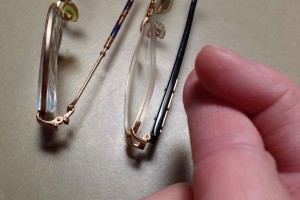
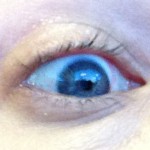

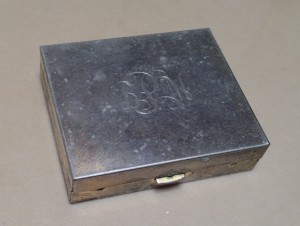




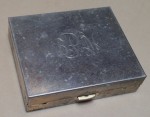
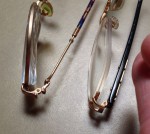

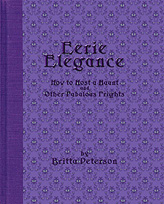
 on www.EerieElegance.com
on www.EerieElegance.com